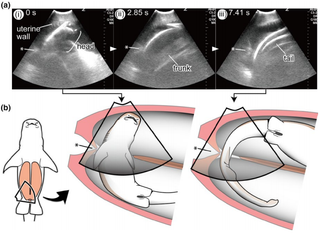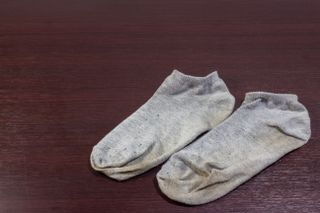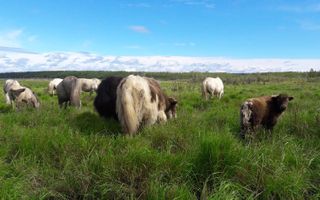This Week's Strangest Science News
Double uterus

Ultrasound images showed that the fetal tawny nurse sharks could actually swim between their mother's two uteruses. They're probably looking for their next meal: eggs that will never have the chance to become baby sharks. The shark fetuses gobble up their brothers and sisters before they're born — or even fertilized. [Read more about the feisty fetuses]
Beware of glitter

Here's something that you may want to avoid putting in your mouth — so-called edible glitter is not as safe to eat as you think. According to the FDA, some decorative glitters contain ingredients that should not be consumed. Check the glitter's label — if it says the product is "non-toxic," but doesn't explicitly say that it's "edible," don't eat it. [Read more about edible glitter]
A malodorous infection

Stinky socks are no fun to be around, but could they actually make you sick? In the case of one man in China...maybe. A man who repeatedly deeply sniffed his socks after wearing them all day developed a fungal lung infection, which doctors said could have come from fungus spores in his socks. However, this is a rare case, and infrequent sniffs of your smelly socks — if you're into that kind of thing — are unlikely to send you to the hospital. [Read more about the stinky case]
'Pleistocene Park'

Russian scientists hope to combat climate change with "Pleistocene Park," an experiment to recreate an ice age steppe in Siberia. By repopulating the park with large herbivores, the researchers hope to restore it to a grassland, similar to those in the region 20,000 years ago. This ecosystem will help keep protect permafrost from melt, and could sequester more carbon in the soil. [Read more about restoring an ice age steppe]
Humongous fungus

An enormous fungus growing under the ground in Michigan weighs nearly 882,000 lbs. (400,000 kilograms) and spans about 75 hectares (0.75 square kilometers, or 140 American football fields). The fungus, also known as the honey mushroom, is at least 2,500 years old — and likely much older — and has a very low mutation rate, which could explain its longevity. [Read more about the humongous fungus]
Want more weird science news and discoveries? Check out these and other "Strange News" stories on Live Science!
- Facts About the Fungus Among Us
- Image Gallery: 25 Amazing Ancient Beasts
- 27 Oddest Medical Case Reports
Original article on Live Science.
Sign up for the Live Science daily newsletter now
Get the world’s most fascinating discoveries delivered straight to your inbox.

